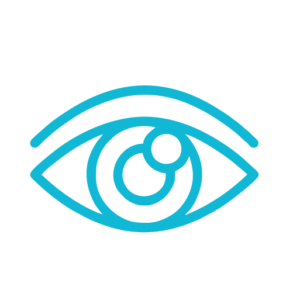- Home
- /
- OPHTHALMOLOGY
Biotech Healthcare Develops, manufactures and markets a wide range of high-quality surgical ophthalmology products through a large number of subsidiaries and a well-established international distribution network
Navigating the World of Ophthalmology: Insights into Vision, Disorders, and Care
1. What is Ophthalmology?
Ophthalmology, derived from the Greek words “ophthalmos” (eye) and “logia” (study), is a specialized branch of medicine that focuses on the anatomy, physiology, and diseases of the eyes. Ophthalmologists are medical doctors who specialize in the comprehensive care of the eyes and visual system. This field encompasses a wide range of medical and surgical interventions aimed at preserving and improving eye health. Ophthalmologists play a crucial role in not only addressing refractive errors, such as nearsightedness and farsightedness, but also in the diagnosis and treatment of various eye conditions and diseases. Their expertise extends to surgical procedures, medical treatments, and vision correction methods.
2. What is Ophthalmological Disorder?
Ophthalmological disorders refer to a diverse array of conditions affecting the eyes and vision. These disorders range from common refractive errors to more complex and potentially sight-threatening issues. Some prevalent ophthalmological disorders include cataracts, glaucoma, age-related macular degeneration (AMD), diabetic retinopathy, and various inflammatory eye diseases. These disorders can impact visual acuity, peripheral vision, and overall eye health. Each condition requires a unique approach to diagnosis and treatment, often involving a combination of medical, surgical, and lifestyle interventions.
3. What are the Symptoms of Ophthalmological Disease?
The symptoms of ophthalmological disorders can vary widely depending on the specific condition.
Common signs include:
- Blurry or Distorted Vision: Many eye disorders manifest as changes in vision quality, leading to blurriness or distortion.
- Difficulty Seeing in Low Light: Reduced ability to see in low-light conditions can be indicative of certain disorders.
- Eye Pain or Discomfort: Pain or discomfort in the eyes may be a symptom of conditions such as glaucoma or corneal issues.
- Redness and Irritation: Inflammation or irritation of the eyes can be a sign of various disorders.
- Changes in Color Perception: Some disorders may affect color vision, leading to noticeable changes. It’s important to note that certain eye conditions, such as glaucoma, may initially present without noticeable symptoms, highlighting the significance of regular eye examinations for early detection.
4. Is Ophthalmological Disorder Dangerous?
The severity of ophthalmological disorders varies, with some being relatively benign and easily treatable, while others can pose significant risks to vision and overall eye health.
- Cataracts: Cataracts are a common age-related condition. They are generally not considered dangerous. However, if left untreated, they can significantly impair vision.
- Glaucoma: Glaucoma, if not managed, can lead to irreversible vision loss. It is characterized by increased intraocular pressure that can damage the optic nerve
- Age-Related Macular Degeneration (AMD): AMD, especially in its advanced stages, can pose a serious threat to central vision. Prompt diagnosis and appropriate treatment are crucial in mitigating the potential dangers associated with these disorders.
5. In Which Age Range Is Ophthalmological Disorder Seen?
Ophthalmological disorders can affect individuals of all ages, from infants to the elderly. However, certain conditions are more prevalent in specific age groups.
- Cataracts: Commonly associated with aging, cataracts often develop in individuals over the age of 50-55.
- Glaucoma: While it can affect individuals of any age, primary open-angle glaucoma is more common in those over 40, and the risk increases with age.
- AMD: As the name suggests, age-related macular degeneration is more prevalent in older adults, typically affecting those over the age of 50. Regular eye check-ups, especially for older individuals, are essential for early detection and timely intervention.
6. Is There Any Relationship Between Ophthalmological Disorder and Nutrition?
Scientific research suggests that nutrition plays a vital role in maintaining eye health and preventing certain ophthalmological disorders. Antioxidants: Foods rich in antioxidants, such as leafy greens, carrots, and berries, are believed to support eye health and protect against conditions like AMD. Omega-3 Fatty Acids: Found in fish, omega-3 fatty acids are associated with a lower risk of AMD and dry eye syndrome. A balanced diet, including these nutrients, can contribute to overall eye health and potentially reduce the risk of certain disorders.
7. How Is Ophthalmological Diagnosis Made?
Ophthalmological diagnosis involves a comprehensive eye examination conducted by a qualified ophthalmologist. This examination may include various tests and procedures: Visual Acuity Tests: Assess the clarity of vision. Tonometry: Measures intraocular pressure, important for detecting glaucoma. Dilated Eye Exams: Allow for a thorough assessment of the retina and optic nerve. Imaging Tests (OCT): Provides detailed cross-sectional views of eye structures. These diagnostic tools help ophthalmologists identify refractive errors, detect eye diseases, and formulate an appropriate treatment plan.
8. What are the Treatment Methods of Ophthalmology?
Treatment methods in ophthalmology vary based on the specific disorder:
- Refractive Errors; corrected with prescription glasses or contact lenses.
- Cataracts; surgical removal and replacement with an artificial lens.
- Glaucoma; management may involve medications or surgical procedures to control intraocular pressure.
- AMD: Treatment options depend on the type and stage, ranging from lifestyle modifications to advanced therapies.
- Corneal Disorders: Surgical interventions, such as corneal transplant, may be necessary. Advancements in medical and surgical techniques, including laser eye surgery and innovative therapies, contribute to the evolving landscape of ophthalmological care.
Frequently Asked Questions (FAQs)
1. Is Ophthalmological Disorder Permanent?
The permanence of ophthalmological disorders varies. While some conditions, like refractive errors, can be effectively managed with corrective measures, others, such as advanced stages of certain retinal disorders, may lead to permanent vision impairment if not addressed in a timely manner. The permanence of ophthalmological disorders varies depending on the specific nature of the disorder and the timeliness of intervention.
Refractive Errors (Nearsightedness, Farsightedness, Astigmatism): These are common and usually correctable conditions. The use of prescription glasses, contact lenses, or refractive surgery, such as LASIK or phakic lens implantation, can effectively manage refractive errors. While the conditions themselves are not permanent, they may change over time, often stabilizing in adulthood.
- Cataracts: Cataracts are a common age-related condition where the eye’s natural lens becomes cloudy. Cataract surgery is a highly successful and routine procedure that involves removing the cloudy lens and replacing it with an artificial one, known as intraocular lens. The surgery effectively restores clear vision, making cataracts a treatable, non-permanent condition.
- Glaucoma: Glaucoma is an eye condition that can lead to optic nerve damage and vision loss. While there is no cure for glaucoma, early diagnosis and effective management through medications, laser therapy, or surgery can slow down the progression and prevent further damage. With proper and timely treatment, individuals with glaucoma can maintain functional vision.
- Age-Related Macular Degeneration (AMD): AMD is a progressive condition affecting the macula, the central part of the retina. There is currently no cure for AMD, and advanced stages can lead to permanent central vision loss. However, various treatments, including anti-VEGF injections, can slow down the progression and, in some cases, improve or stabilize vision.
- Genetic Eye Disorders: Some ophthalmological disorders have a genetic component, such as retinitis pigmentosa. The permanence of these disorders depends on the specific condition. While there may not be a cure, management strategies and ongoing research offer hope for future treatments. Corneal Disorders: Conditions affecting the cornea, such as keratoconus, may require interventions ranging from contact lenses to corneal cross-linking or, in severe cases, corneal transplant. The effectiveness of treatment depends on the specific disorder and its stage.
2. Is Ophthalmological Discomfort Genetic?
Genetic factors can contribute to certain ophthalmological disorders. Conditions like glaucoma and AMD may have a hereditary component. However, environmental factors, lifestyle choices, and regular eye care can significantly influence the development and progression of these disorders.
3. What Does Ophthalmological Examination Mean?
Ophthalmological examination refers to a thorough assessment of the eyes and visual system by a qualified eye care professional. This examination includes various tests and procedures to evaluate visual acuity, eye health, and the presence of any ophthalmological disorders. Regular eye exams are crucial for early detection and timely intervention. In conclusion, ophthalmology is a multidisciplinary field that addresses a wide spectrum of eye-related issues. From common refractive errors to complex disorders, the field continues to advance through scientific research, medical, and surgical interventions.
WHAT DO USERS SAY
Plot No. 4, PHARMEZ,
Sarkhej Bavla N.H. 8A.
Near Village Matoda,
Taluka Sanand, District
Ahmedabad, Gujarat 382213,
India






